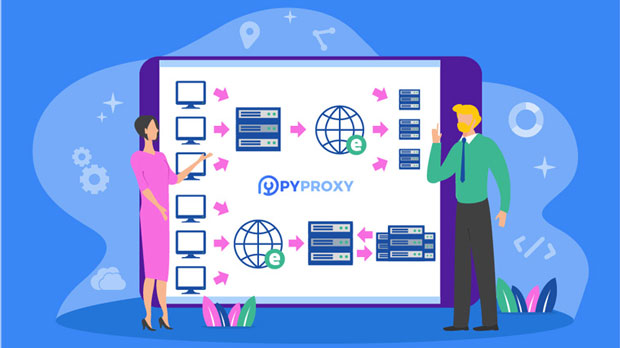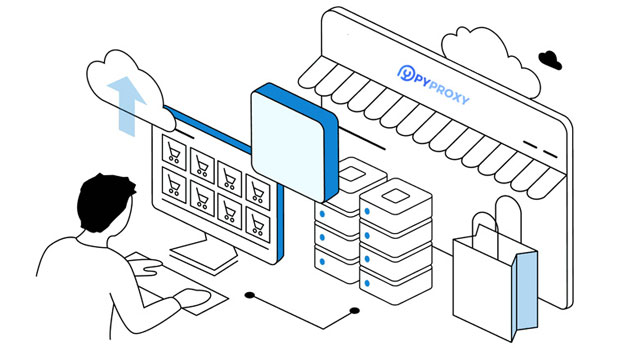Can a cheap SOCKS5 proxy support high volume data transfer?
socks5 proxies are commonly used to route network traffic through intermediary servers, providing anonymity and flexibility for users. However, when it comes to handling high-traffic data transfers, the question arises: can cheap SOCKS5 proxies handle the load? This article explores the capabilities of affordable SOCKS5 proxies in handling large-scale data transfers. It will cover factors like bandwidth, latency, server performance, and network stability, providing a comprehensive understanding of whether budget-friendly SOCKS5 proxies are suitable for heavy traffic usage. The goal is to give practical insights for users considering these proxies for data-heavy tasks such as media streaming, file transfers, or high-volume web scraping. Understanding SOCKS5 Proxies and Their FunctionalitySOCKS5 proxies are a type of proxy server that operates at a low level of the internet protocol stack, specifically the transport layer (Layer 5) of the OSI model. Unlike HTTP proxies, which are designed for web traffic, SOCKS5 proxies can handle any type of traffic, whether it's HTTP, FTP, or even torrenting. This flexibility makes SOCKS5 proxies attractive for users looking to mask their IP addresses, bypass geo-restrictions, or manage network traffic.The SOCKS5 protocol, by design, allows for greater anonymity than many other types of proxies. It doesn't alter the data being transmitted, which reduces the risk of information leakage or tracking. Additionally, SOCKS5 proxies can support authentication, ensuring that only authorized users can access the proxy server. However, when it comes to the volume of data passing through these proxies, there are key factors to consider.Key Factors Affecting Data Transfer in Cheap SOCKS5 ProxiesWhen assessing whether cheap SOCKS5 proxies can handle high traffic data transfers, several factors come into play. These include the available bandwidth, server capacity, network speed, and overall proxy server performance.1. Bandwidth and ThroughputBandwidth is the maximum amount of data that can be transferred over a network connection in a given period of time, typically measured in Mbps (megabits per second) or Gbps (gigabits per second). Cheap SOCKS5 proxies often have lower bandwidth allocations, which can severely limit their ability to support large-scale data transfers. For tasks like streaming high-definition videos, downloading large files, or web scraping with significant data retrieval requirements, inadequate bandwidth may cause slow speeds, interruptions, or even dropped connections.To ensure efficient data transfer, it's essential to choose a proxy that can offer sufficient bandwidth to handle your specific needs. For high-volume applications, such as media streaming or bulk data processing, even high-quality SOCKS5 proxies might experience bottlenecks if the proxy servers themselves are not equipped to manage heavy loads.2. Server Location and LatencyLatency, or the delay in data transmission, is another critical factor. SOCKS5 proxies located far from the user or the destination server can introduce high latency, causing slower data transfer rates. This can be particularly problematic when transferring large files or streaming media where continuous data flow is necessary. Cheap SOCKS5 proxies are often hosted on servers with suboptimal locations, leading to higher latency and slower performance. When selecting a socks5 proxy for high-traffic applications, users should be mindful of the physical location of the proxy servers and ensure they are strategically placed for optimal performance.3. Server Load and ReliabilityMany low-cost SOCKS5 proxy providers often place customers on shared servers. This means that a single server can be handling traffic from multiple users simultaneously, potentially leading to overloading. When too many users are utilizing the same server for high-bandwidth tasks, performance will degrade significantly. Overloaded servers can cause network congestion, increased latency, and packet loss, all of which will impact data transfer quality.Furthermore, cheap proxies may not offer the same level of uptime guarantees as more expensive options. Frequent downtimes, connectivity issues, or intermittent outages can be detrimental to high-traffic applications, where stability and reliability are paramount.Impact of Traffic Volume on Cheap SOCKS5 ProxiesThe impact of high traffic volumes on cheap SOCKS5 proxies is substantial. Proxies with limited resources may struggle to handle large-scale data transfers due to the following reasons:1. Bandwidth SaturationAs mentioned earlier, bandwidth limitations are one of the primary reasons that cheap SOCKS5 proxies may fail to support high traffic. When a proxy server’s bandwidth is saturated by multiple users or excessive data flow, the quality of service degrades significantly. For example, users might experience slow connection speeds, frequent buffering, or failed uploads.2. Increased Packet LossPacket loss occurs when data packets fail to reach their destination. Cheap proxies, particularly those with overloaded servers or poor network infrastructure, are prone to packet loss, which can severely affect the reliability of large data transfers. For activities such as file uploads, streaming, or web scraping, packet loss can result in incomplete or corrupted transfers, leading to delays and frustration.3. Throttling and Rate LimitingSome budget-friendly SOCKS5 proxy providers may implement throttling or rate limiting to control excessive usage and prevent their servers from becoming overloaded. These restrictions can hinder high-traffic data transfers, as users may experience slowdowns or temporary halts in service. For those needing consistent, high-speed data transfers, these limitations can be a significant drawback.Optimizing High-Traffic Data Transfers with Cheap SOCKS5 ProxiesWhile it is true that cheap SOCKS5 proxies have limitations when handling high traffic, there are several strategies that users can implement to optimize performance.1. Use Multiple ProxiesTo mitigate the issues of bandwidth saturation and server overload, users can consider using multiple SOCKS5 proxies in tandem. Distributing the traffic across multiple proxies can help reduce the strain on individual servers, ensuring smoother data transfer and minimizing performance bottlenecks.2. Use Proxies with Dedicated ResourcesChoosing a SOCKS5 proxy that offers dedicated resources, such as private proxies, rather than shared proxies can drastically improve performance. Dedicated proxies are not affected by the actions of other users, ensuring more consistent speeds and better handling of high-volume data transfers.3. Opt for Proxies with Low LatencyFor tasks that demand low latency, such as real-time streaming or gaming, users should prioritize SOCKS5 proxies with a proven record of low-latency performance. This can help reduce delays and ensure uninterrupted data flow, even during high-traffic periods.ConclusionIn conclusion, while cheap SOCKS5 proxies may provide an affordable solution for general use, they are not always suitable for high-traffic data transfers. Limitations in bandwidth, server capacity, and latency can significantly impact the ability to handle large-scale data operations. For users requiring high-speed, reliable data transfer, investing in higher-quality proxies or adopting strategies such as using multiple proxies or dedicated servers may be necessary. By understanding these limitations and optimizing the use of SOCKS5 proxies, users can improve their experience and ensure smoother data transfers, even when working with heavy traffic demands.
2024-12-26

























































